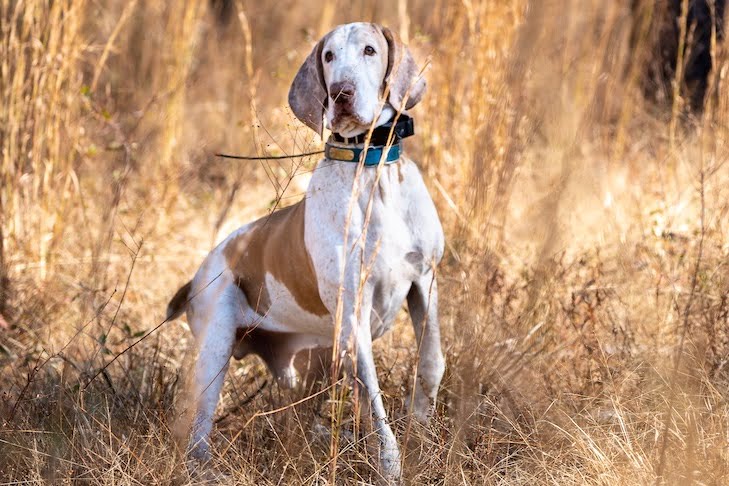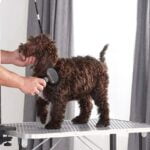Table of Contents
Large dogs require regular exercise to maintain their health, manage their weight, and keep them happy. Providing structured and varied exercise plans for large dogs is essential to meet their physical and mental needs. In this article, we explore 10 effective exercise routines that will help keep your big dog active and fit.

Why Exercise is Important for Large Dogs
Regular exercise helps large dogs maintain a healthy weight, strengthens their muscles, and promotes mental stimulation. It can also prevent behavioral issues caused by boredom and excess energy. For more on the importance of exercise, visit AKC Importance of Exercise.
1. Daily Walks
Daily walks are a fundamental part of exercise plans for large dogs. Aim for at least 30 to 60 minutes of walking each day, varying the route to keep it interesting. For more walking tips, visit AKC Dog Walking Tips.
2. Running and Jogging
Running or jogging with your large dog can provide an excellent cardio workout. Ensure your dog is healthy enough for this high-impact exercise and gradually build up their stamina. For more on running with dogs, see Running with Your Dog.
3. Fetch and Frisbee
Playing fetch or Frisbee is a great way to engage your large dog in vigorous exercise. Use a spacious, safe area where your dog can run freely. For more on playing fetch, visit PetMD Playing Fetch.
4. Agility Training
Agility training provides both physical and mental stimulation. Set up an agility course in your backyard or join a local agility class to keep your large dog challenged. For more on agility training, see AKC Agility Training.
5. Swimming
Swimming is an excellent low-impact exercise for large dogs. It’s especially beneficial for dogs with joint issues or arthritis. Find a dog-friendly pool or safe natural body of water. For more on swimming, visit AKC Benefits of Swimming.
6. Hiking
Hiking provides a full-body workout and an opportunity to explore new environments. Choose dog-friendly trails and ensure your dog is in good physical condition before embarking on long hikes. For more on hiking with dogs, visit AKC Dog-Friendly Hiking Trails.
7. Tug-of-War
Tug-of-war is a fun and interactive game that can help strengthen your dog’s muscles and improve their coordination. Use a sturdy rope toy and ensure you play safely to prevent injuries. For more on playing tug-of-war, see The Spruce Pets Tug-of-War.
8. Interactive Toys
Interactive toys, such as puzzle feeders and treat-dispensing toys, can provide mental stimulation and keep your dog engaged. These toys can be used indoors or outdoors as part of their exercise routine. For more on interactive toys, visit AKC Best Interactive Dog Toys.
9. Scent Work
Scent work taps into your dog’s natural instincts and provides excellent mental stimulation. Hide treats or toys around your home or yard and encourage your dog to find them. For more on scent work, visit AKC Scent Work.
10. Playdates and Dog Parks
Social interaction is important for large dogs. Arrange playdates with other dogs or visit dog parks to allow your dog to play and socialize. Ensure the environment is safe and your dog is well-behaved in social settings. For more on dog parks, see PetMD Dog Park Rules.
Conclusion
Developing effective exercise plans for large dogs is essential for their health, happiness, and overall well-being. By incorporating a variety of physical and mental activities, you can keep your large dog engaged and fit. Regular exercise can prevent health issues and behavioral problems, ensuring your dog leads a fulfilling life. For more tips on caring for your large dog, check out our Pet Care Guide.
FAQs on Exercise Plans for Large Dogs
How much exercise does a large dog need daily?
Large dogs typically need at least 30 to 60 minutes of exercise daily, but this can vary based on age, breed, and health. Consult your vet for personalized recommendations.
What are the best exercises for large dogs with joint issues?
Low-impact exercises such as swimming and gentle walks are ideal for large dogs with joint issues. Avoid high-impact activities that can exacerbate joint problems.
Can I over-exercise my large dog?
Yes, over-exercising can lead to exhaustion and injuries. Monitor your dog’s behavior and energy levels, and provide adequate rest between exercise sessions.
How can I keep my large dog mentally stimulated?
Interactive toys, puzzle feeders, scent work, and training sessions are great ways to keep your large dog mentally stimulated and engaged.
Are there specific exercises to avoid for large dogs?
Avoid exercises that involve excessive jumping or twisting, especially for breeds prone to joint issues. High-impact activities should be done in moderation and with caution.
What should I do if my large dog shows signs of fatigue or discomfort during exercise?
Stop the activity immediately and allow your dog to rest. Ensure they have access to water and consult your veterinarian if signs of discomfort persist.











